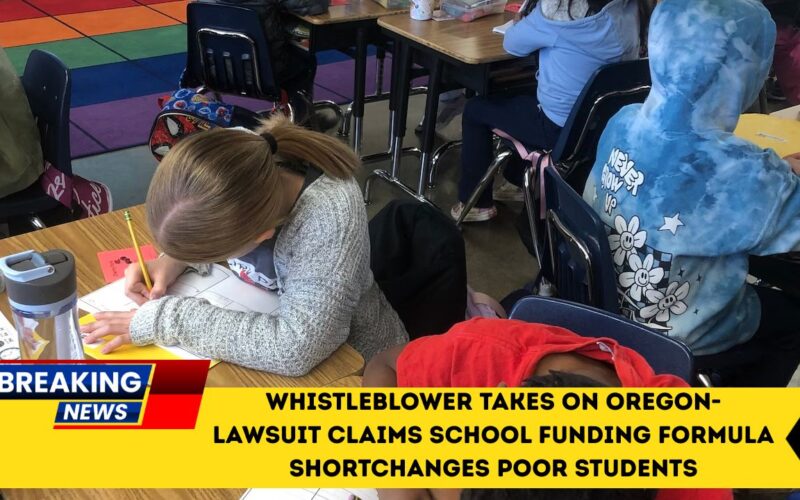In early 2025, former Oregon state data analyst Jesse Helligso raised concerns with lawmakers and agency leadership about the state’s school-funding formula.
He argued that the current model fails to properly compensate school districts serving students from low-income families. According to his wrongful-termination complaint, he was dismissed after he repeatedly urged legislative action.
He filed the suit on November 5, 2025, in the Marion County Circuit Court, seeking $556,667 in damages for lost wages and emotional distress.
What the Lawsuit Alleges
- The funding formula used for decades by the State of Oregon and its Legislature does not sufficiently account for poverty-level students.
- Schools with higher percentages of students living at or below the federal poverty line get less extra funding than they should, according to the whistleblower.
- Warning to lawmakers and state officials began in winter and spring of 2025, but no meaningful reform was undertaken.
- Shortly thereafter, Helligso alleges he was retaliated against and dismissed, prompting the legal action.
Key Facts & Figures
| Item | Detail |
|---|---|
| Filing date of lawsuit | November 5, 2025 |
| Plaintiff | Jesse Helligso, former data analyst |
| Defendant | State of Oregon & Oregon Legislature |
| Damages sought | $556,667 for lost wages + emotional toll |
| Core allegation | Funding formula “short-changes” poor students |
| Major benefit area affected | Schools with high numbers of students from low-income families |
| Geographic focus | East Multnomah County & similar districts |
Why the Funding Formula Matters
The funding model for K-12 education in Oregon is critical because it determines how state dollars are allocated to school districts. Key concerns raised by the whistleblower:
- Under-allocation: Schools serving high-poverty populations don’t receive adequate weighting or bonus funding relative to their needs.
- Equity gap: Students in low-income areas may start behind resources, but the formula fails to fully compensate for that disadvantage.
- Accountability issues: Internal state data analyses allegedly flagged these problems, but were not acted upon.
- Impact on districts: Schools in east Multnomah County and other high-poverty zones may struggle to provide the same level of support (tutoring, extra staff, programs) as wealthier districts.
What Happens Next
- The court will review Helligso’s claim of wrongful termination and the evidence of the funding formula’s alleged failings.
- If the court finds merit, the state may be required to revise the funding model or increase transparency and adjustments for poverty-weighting.
- The case could trigger a wider review of how school funding formulas across Oregon—or even other states—treat socioeconomic disadvantage.
- For school districts, this lawsuit underscores the importance of advocating for fair formulas and monitoring funding gaps themselves.
This lawsuit brought by Jesse Helligso shines a spotlight on the critical issue of education funding equity in Oregon.
By claiming that the funding formula short-changes poor students, the case not only seeks compensation for the whistleblower but also challenges how the state supports its most vulnerable learners.
For districts, parents, and policymakers, the outcome could spark meaningful reform—ensuring that every student, regardless of income, has access to the resources they need to succeed.



